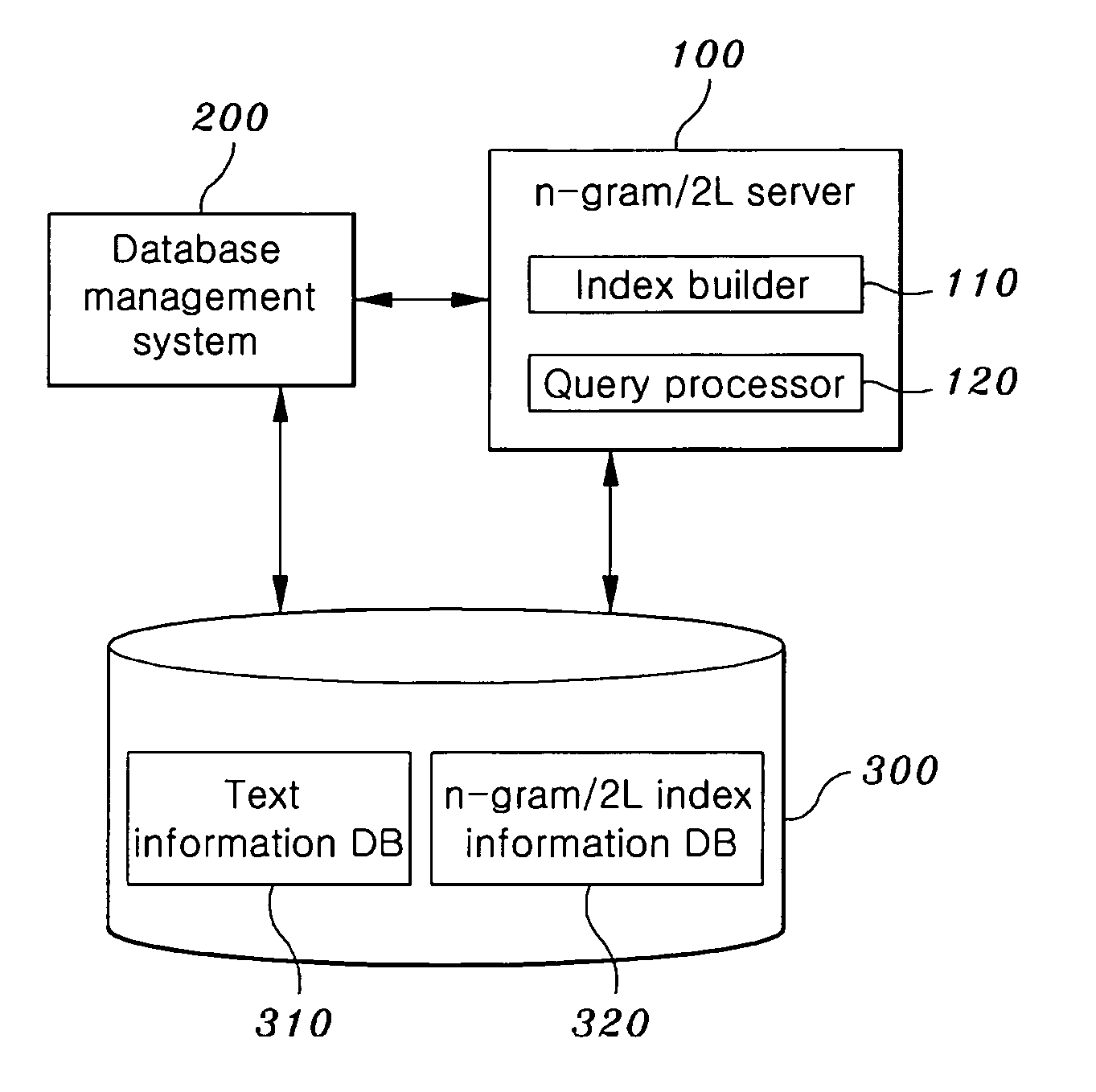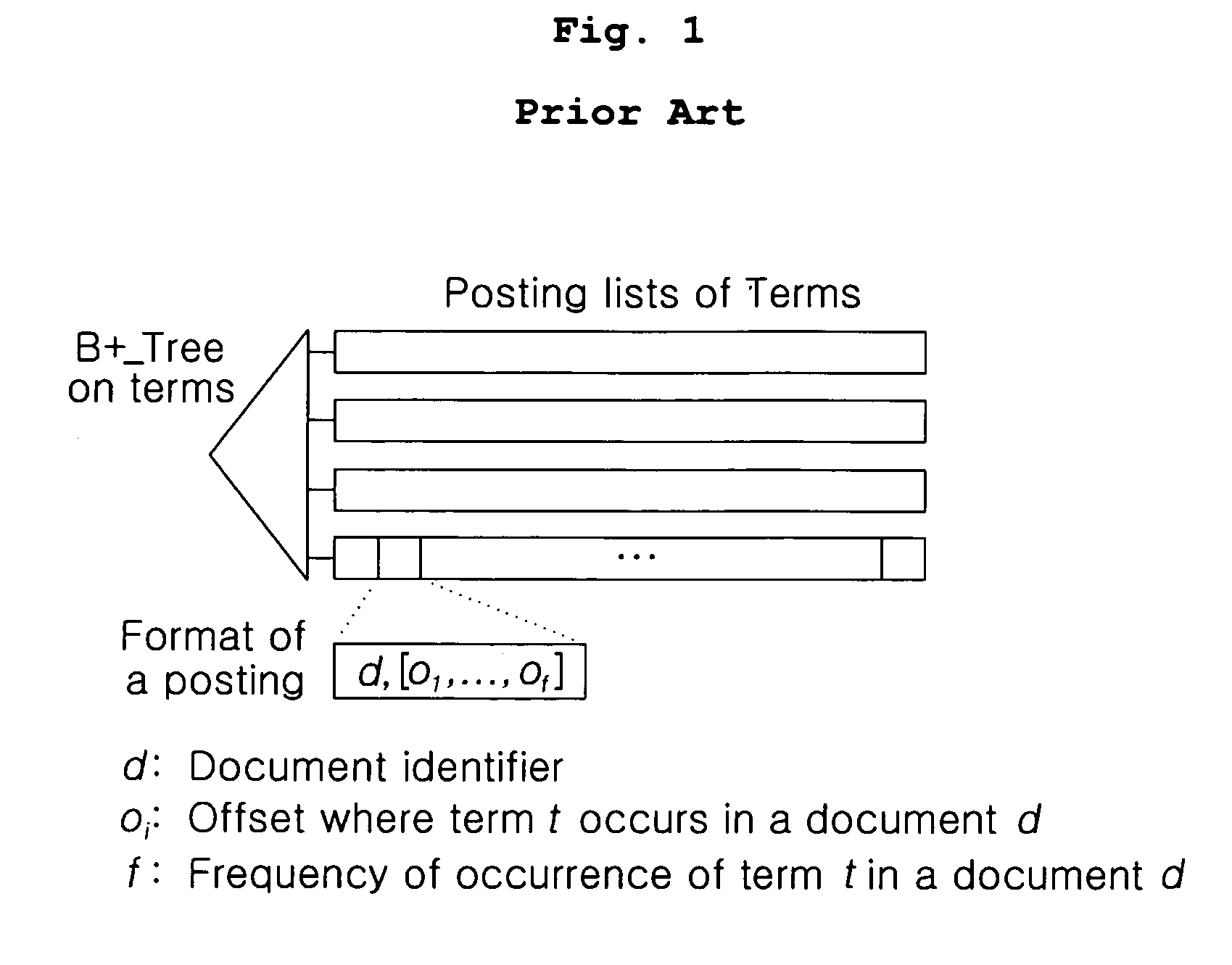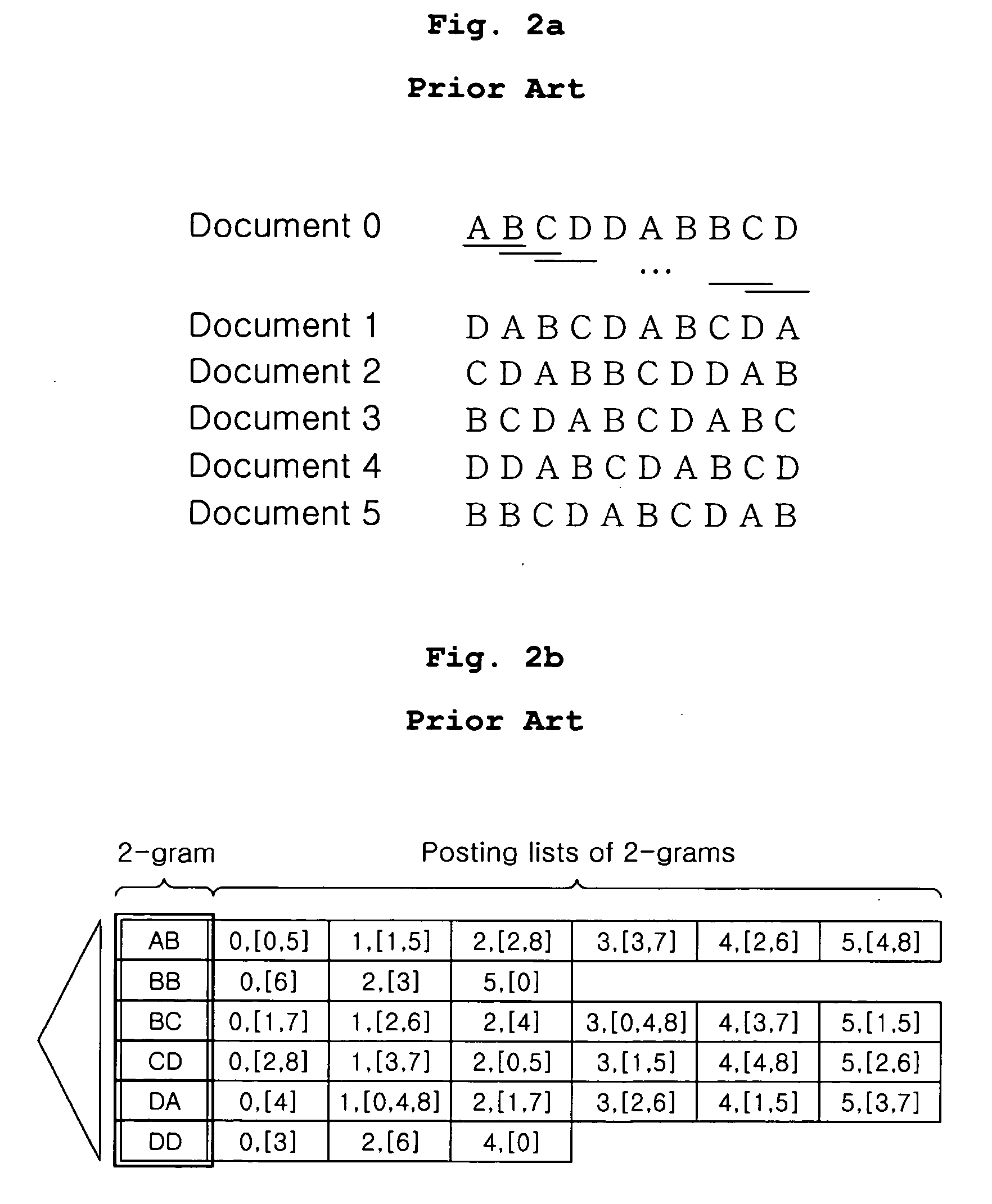Two-level n-gram index structure and methods of index building, query processing and index derivation
a two-level n-gram index and index derivation technology, applied in the field of inverted index structure, can solve the problems of large index size, long processing time, and long process time of queries, and achieve the effects of reducing the size of n-gram index, eliminating redundancy of position information, and improving query performan
- Summary
- Abstract
- Description
- Claims
- Application Information
AI Technical Summary
Benefits of technology
Problems solved by technology
Method used
Image
Examples
Embodiment Construction
class="d_n">[0049] Hereinafter, a detail description of the present invention will be given with reference to the attached drawings. The present invention is not restricted to the following embodiments, and many variations are possible within the spirit and scope of the present invention. The embodiments of the present invention are provided in order to more completely explain the present invention to anyone skilled in the art.
[0050] The present invention will now analyze the factors that the size of an n-gram index becomes large, identify that the major factors results from the redundancies in the position information and explain how to eliminate the redundancies.
[0051]FIG. 3 depicts an example of redundancies of position information in the n-gram index and a method of eliminating the redundancies, i.e., a two-level n-gram index, (hereinafter, referred to as n-gram / 2L).
[0052] In the figure, a set of documents (A) is an example consisting of N documents. If a string of characters ...
PUM
 Login to View More
Login to View More Abstract
Description
Claims
Application Information
 Login to View More
Login to View More - R&D
- Intellectual Property
- Life Sciences
- Materials
- Tech Scout
- Unparalleled Data Quality
- Higher Quality Content
- 60% Fewer Hallucinations
Browse by: Latest US Patents, China's latest patents, Technical Efficacy Thesaurus, Application Domain, Technology Topic, Popular Technical Reports.
© 2025 PatSnap. All rights reserved.Legal|Privacy policy|Modern Slavery Act Transparency Statement|Sitemap|About US| Contact US: help@patsnap.com



